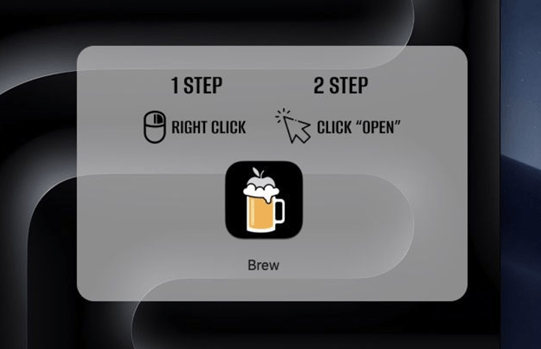Tech News
Stealer here, stealer there, stealers everywhere!
Information stealers, which are used to collect credentials to then sell them on the dark web or use in subsequent cyberattacks, are actively distributed by cybercriminals. Some of them are available through a monthly subscription model, thus attracting novice cybercriminals. According to Kaspersky Digital Footprint Intelligence, almost 10 million devices, both personal and corporate, were attacked by information stealers in 2023. That said, the real number of the attacked devices may be even higher, as not all stealer operators publish all their logs immediately after stealing data.
This
year,
we
analyzed
quite
a
few
previously
known
and
new
stealers,
which
we
described
in
detail
in
our
private
reports.
You
will
find
a
few
excerpts
from
these
below.
To
learn
more
about
our
crimeware
reporting
service,
contact
us
at
Kral
In mid-2023, we discovered the Kral downloader which, back then, downloaded the notorious Aurora stealer. This changed in February this year when we discovered a new Kral stealer, which we believe is part of the same malware family as the downloader due to certain code similarities.
The Kral stealer is delivered solely by the Kral downloader. The downloader itself sneaks onto the user’s device when a potential victim visits an adult website that embeds malicious ads. These redirect the victim to a phishing page which offers them to download a file. That file is the Kral downloader. Back in 2023, the downloader was written in a combination of C++ and Delphi, which resulted in relatively large samples. These days, the downloader is solely written in C++, which has shrunk the size of the payload tenfold.
The Kral stealer has quite some similarities with the downloader. Both are signed and both use the same function for binary integrity verification ( WinVerifyTrust()). Also, they both use the same key for string encryption. Last but not least, the Kral name is used in the PDB paths to both binaries.
In terms of functionality, the stealer is particularly interested in cryptocurrency wallets and browser data. A random folder is created in C:\ProgramData\, where stolen data, as well as information about the system (local time, time zone, CPU, etc) are stored. The folder is then zipped and sent to the C2 via the COM interface of the Background Intelligent Transfer Service (BITS). The stealer only collects data once. However, if the user launches it again, it will steal once more.
AMOS
The AMOS stealer targeting macOS was first identified in early 2023. In June 2024, we discovered a new domain delivering this malware. The website impersonated the Homebrew package manager. Following a deeper investigation, we found out that users ended up on this site through malvertising.
As you can see from the image above, there are two options to install the malware. First, there is an option to download the infected DMG image directly, while the second option is to use an installation script.
The installation script is fairly simple. It downloads the malicious image and installs it, after which it downloads and installs the legitimate Homebrew package. In the other case, when the user downloads the image, the following screen is displayed:
As can be seen, the user is tricked into thinking that they have launched the Homebrew app and opening the AMOS stealer. When the malware is executed, multiple instances of the Terminal and bash processes are started. These processes start collecting system information and creating new hidden session history files. The stealer also embeds a specific trick to collect the macOS user password. Instead of logging keystrokes, the malware displays deceptive dialog boxes requesting the user’s credentials.
Vidar / ACR
The actors behind Vidar spread it by adding comments on YouTube that contain links to a ZIP or RAR archive hosted on a file-sharing platform which is changing every week. The archive is password protected, but the password is found at the same URL as the archive.
The downloaded archive contains another password-protected archive, which contains the following files:
converter.exe: legitimate ImageMagick application; vcomp100.dll: malicious DLL used for DLL hijacking; bake.docx: encrypted first stage loader; blindworm.avi: IDAT loader, the second stage payload.The legitimate converter.exe loads vcomp100.dll as the former is vulnerable to DLL hijacking. Next, the malicious DLL reads the encrypted “bake.docx” file, gets the payload and the key from a specified offset, and decodes the payload. That payload is a variant of the Penguish downloader containing an IDAT packed sample. This means we can use the IDAT loader extractor to extract the final payload, which is the Vidar stealer.
What is interesting here is that instead of stealing data, Vidar actually downloads the ACR stealer. The latter, like many stealers these days, is interested in browser data and wallets. Vidar, too, normally targets the same types of data, however in this case, it uses the ACR Stealer as an exfiltration module.
According to our telemetry data, most victims are found in Brazil.
Conclusion
Stealers are found everywhere, and they are popular among cybercriminals. Stolen data can be either leveraged for further attacks by the attackers themselves or sold on the dark web. Although stealers implement extensive support for snatching crypto-related data, the harvesting of credentials can be just as damaging – or even more so. This is especially true for credentials that provide access to corporate networks which can then be leveraged to deploy ransomware attacks.
Relatively simple measures, such as 2FA, choosing unique passwords, downloading software only from official websites, and double-checking the website before downloading, can complicate this kind of attacks.
If
you
would
like
to
stay
up
to
date
on
the
latest
TTPs
being
used
by
criminals,
or
if
you
have
questions
about
our
private
reports,
contact
us
at
Indicators of compromise
Kral
02c168aebb26daafe43a0cccd85397b2
039bebb6ccc2c447c879eb71cd7a5ba8
0509cc53472b265f8c3fc57008e31dbe
Amos
ec7f737de77d8aa8eece7e355e4f49b9
dd2832f4bf8f9c429f23ebb35195c791
When you subscribe to the blog, we will send you an e-mail when there are new updates on the site so you wouldn't miss them.





Comments